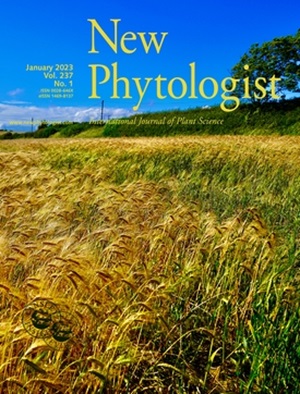Light-activated channelrhodopsins: a revolutionary toolkit for the remote control of plant signalling
IF 8.3
1区 生物学
Q1 PLANT SCIENCES
引用次数: 0
Abstract
Channelrhodopsins (CHRs), originating within algae and protists, are membrane-spanning ion channel proteins that are directly activated and/or deactivated by specific wavelengths of light. Since 2005, CHRs have been deployed as genetically encoded optogenetic tools to rapidly advance understanding of neuronal networks. CHRs provide the opportunity to finely tune ion transport across membranes and regulate membrane potential. These are fundamental biochemical signals, which in plants can be translated into physiological and developmental responses such as changes in photosynthesis, growth, turgor, vascular hydraulics, phosphorylation or reactive oxygen species (ROS) status, gene expression, or even cell death. Exploration of CHR family diversity and structure–function engineering has led to the expansion of the CHR optogenetic toolbox, offering unparalleled opportunities to precisely control and understand electrical and secondary messenger signalling in higher plants. In this Tansley Insight, we provide an overview of the recent progress in the application of CHR optogenetics in higher plants and discuss their possible uses in the remote control of plant biology, illuminating a new future domain for plant research enabled through synthetic biology.求助全文
约1分钟内获得全文
求助全文
来源期刊

New Phytologist
生物-植物科学
自引率
5.30%
发文量
728
期刊介绍:
New Phytologist is an international electronic journal published 24 times a year. It is owned by the New Phytologist Foundation, a non-profit-making charitable organization dedicated to promoting plant science. The journal publishes excellent, novel, rigorous, and timely research and scholarship in plant science and its applications. The articles cover topics in five sections: Physiology & Development, Environment, Interaction, Evolution, and Transformative Plant Biotechnology. These sections encompass intracellular processes, global environmental change, and encourage cross-disciplinary approaches. The journal recognizes the use of techniques from molecular and cell biology, functional genomics, modeling, and system-based approaches in plant science. Abstracting and Indexing Information for New Phytologist includes Academic Search, AgBiotech News & Information, Agroforestry Abstracts, Biochemistry & Biophysics Citation Index, Botanical Pesticides, CAB Abstracts®, Environment Index, Global Health, and Plant Breeding Abstracts, and others.
 求助内容:
求助内容: 应助结果提醒方式:
应助结果提醒方式:


